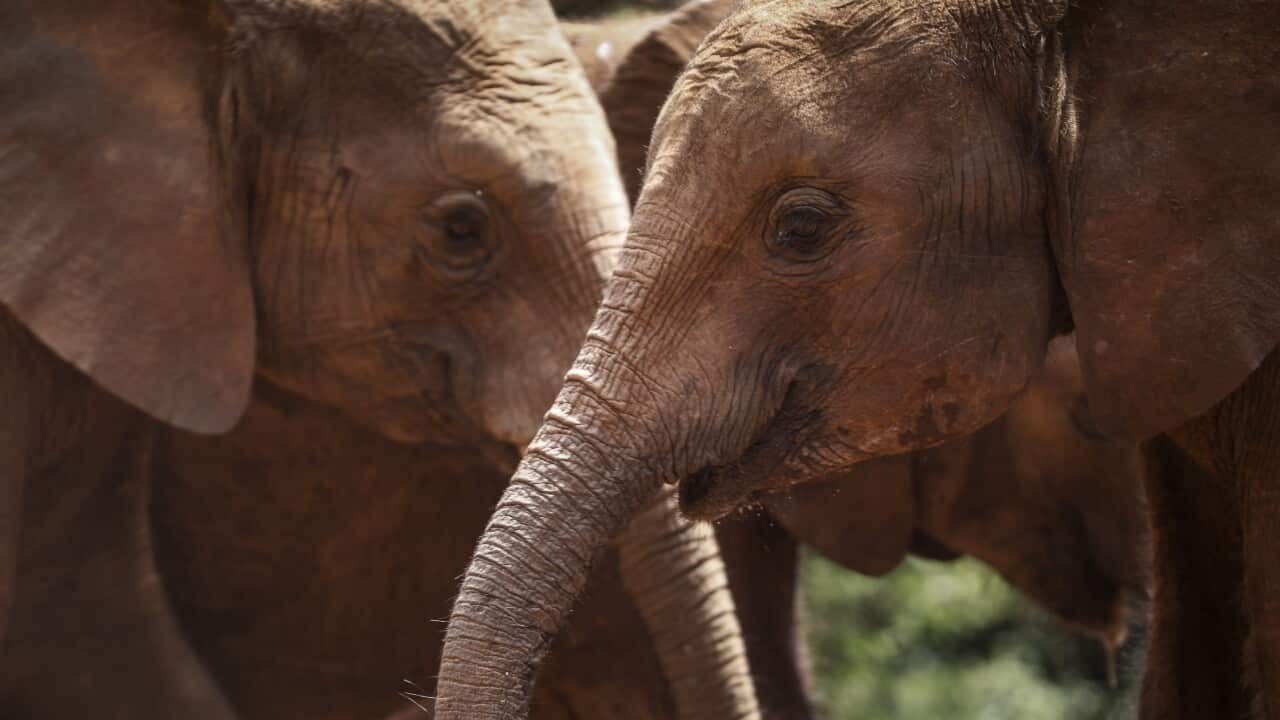This is what is known as an elephant rumble.
It may not be apparent to the human ear, but scientists say it contains a name.
When this African Savannah elephant, known to scientists as Margaret, hears this recording, she responds.
What you are about to hear is a different elephant rumble, and it contains a different name.
When Margaret hears it, she doesn't respond.
Scientists say it proves elephants have a way to communicate directly to individuals.
Published in the scientific journal - Nature, Ecology and Evolution - the new report provides unprecedented insights into animal cognition.
The study was completed by researchers from Save the Elephants, Colorado State University, and ElephantVoices.
George Wittemyer from Colorado State University was a co-author on the report.
"Elephants are highly social, highly vocal species and we know there's a lot going on with their communication but we haven't been able to decipher much. It's quite complicated, the structure of their calls and we know that if we could get inside into what they're saying we could really get a new perception on how they think".
During the study, Dr Wittemyer says researchers analysed four hundred and sixty nine Wild African elephant rumbles recorded over thirty six years in two areas of Kenya.
"About half of the sound in their call is below our level of hearing so we actually cannot hear it. So we had to use this special microphone to record these calls. We also had to be quite close to them because sound attenuates with distance so we wanted to get all the structure in that call in order to study what's actually going on"
The researchers then used Artificial Intelligence to uncover a distinctive sound in elephant calls that is similar to a name.
They call it a vocal label.
When these calls were played back, the elephants responded energetically to those addressed to them.
Calls containing vocal labels were more commonly heard among elephants communicating over long distances, or adults addressing calves.
Adults were also more likely than juveniles to use vocal labels, suggesting that elephants may take years to learn to address one another by name.
Dr Wittemyer again.
"Elephants do these really interesting behaviours where sometimes when they're in a big group of females or a mate check of a group will give a call. The entire group will respond, they'll group up around her or they'll follow her. Then other times she gives seemingly a very similar call and nobody will respond, nobody will react, except for a single elephant and that elephant will respond or come up to her. So that indicates that they have a means by which to communicate to who they want to talk to."
While it is extremely rare, elephants aren't the only animals believed to use names.
Dolphins and parrots address each other by imitating the unique calls of the individual they want to communicate with.
The key difference with elephants is, like humans, the names appear to be arbitrary.
The lead author on the report, Dr Mickey Pardo, also from Colorado State University, says he hopes the research will contribute to conservation efforts.
"One thing that is a huge threat to elephants around the world right now is human elephant conflict so in elephant range states in Africa and Asia elephants are coming into conflict with people and this is a huge threat to their survival. I think if people appreciate elephants more this may increase understanding and tolerance of elephants and could help in their conservation that way."
And while this study provides significant insight into how elephants communicate, Mickey Pardo says it's just the start.
"I think there’s a lot of potential to learn more about elephant calls. I think we’ve just scratched the surface of just how complex their communication is."
As few as four hundred thousand African elephants remain in the wild today.













